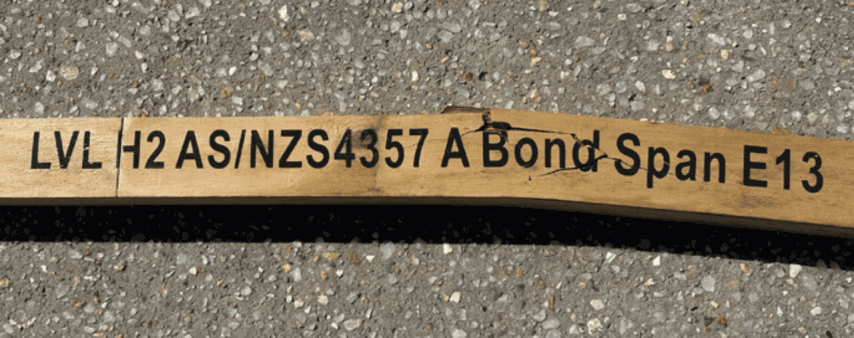Australia’s construction sector faces a growing threat from non-conforming timber, jeopardising building safety and quality.
Non-conforming timber refers to any timber product falsely claiming to be something it is not, either by failing to meet required standards for its use or being supplied with the intent to deceive users.
Non-conforming LVL (Laminated Veneer Lumber) may fail to meet rigorous Australian construction standards, featuring quality deficiencies, misidentified wood sources, faulty glues, manufacturing flaws, and inadequate product testing. The importing and use of these products potentially tarnish LVL’s hard-earned reputation as a trustworthy, premium construction material.
Wesbeam, Australia’s only LVL manufacturer, is dedicated to upholding Australian Standards and safeguarding our industry and homeowners. Independent assessments back our commitment to quality and compliance for each product we supply.
How can you tell if the LVL you’re using is compliant?
To be compliant with AS/NZS 4357.0, each piece of LVL must have the following information labelled on it:

- Reference to the standard, ie., AS/NZS 4357.0
- The LVL manufacturer’s name or registered mark
- The registered brand or marking that, in conjunction with the published literature, clearly identifies the structural properties that apply to that product, or where an F-grade classification has been adopted, an F-grade brand should be used
- Clearly stated limitations of and use, if relevant
- The bond type of the glueline, i.e., A-BOND
- The formaldehyde emission class
- The preservation-treated branding is in accordance with AS/NZA 1604.1, if relevant
What are examples of branding information that is not compliant with Australian Standards?

The branding example in this picture is non-compliant as there are:
- No manufacturer’s name or register mark; thus, there is no way of determining who is responsible for the LVL
- No accurate structural property identifier: E13 is not a grade given in AS1720 and there is no way of determining the structural properties from this label
- No formaldehyde emission class
- Unsuitable information on preservative treatment
I’m unsure if the timber is compliant, what do I need to do?
If you are unsure, please undertake your due diligence and ask the supplier for the following:
- Certification of compliance from the manufacturer
- Characteristic structural properties from the manufacturer
- Certification of the ongoing validation/test procedures to ensure compliance during the manufacturing process (i.e., not just one test result from one batch of LVL)
- Any Chain of Custody documentation
Register with the Australian Building Codes Board to report a suspected non-conforming building product.
What is the overall risk of using non-compliant timber products?
The supply and use of non-compliant timber products can damage the reputation and hard work of those in the industry who seek to manufacture and supply Australia with safe, robust, and compliant materials.
Choosing Wesbeam ensures peace of mind, quality, safety, and trust. For more information, contact our dedicated team for insights into this critical issue.
Download our FAQ's flyer here